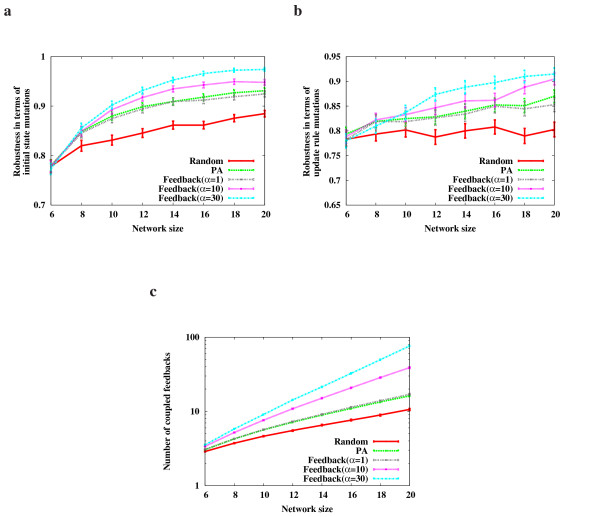Figure 1.
The variation of robustness and the number of coupled feedback loops along with network evolution. (a) Change of robustness with respect to initial update mutations during network evolution for the "CONJ-DISJ" model (see Methods). (b) Change of robustness with respect to update rule mutations during network evolution for the "CONJ-DISJ" model. (c) Change of the number of coupled feedback loops during network evolution for the "CONJ-DISJ" model. Here, "PA" refers to the networks that are evolved using the preferential attachment model and "Feedback" refers to the networks that are evolved by favoring the formation of coupled feedback loops with a selection pressure (α) (see Methods for details). In addition, "Random" denotes the randomly generated networks with the same number of nodes and links as those in "PA" and "Feedback". Network size means the number of nodes (|V|) of a network. For each model, the average and the confidence level (95%) of robustness over 1,000 networks are shown on the y-axis. The Boolean networks using the "CONJ" and "DISJ" models also showed similar results (see additional data file 1).

